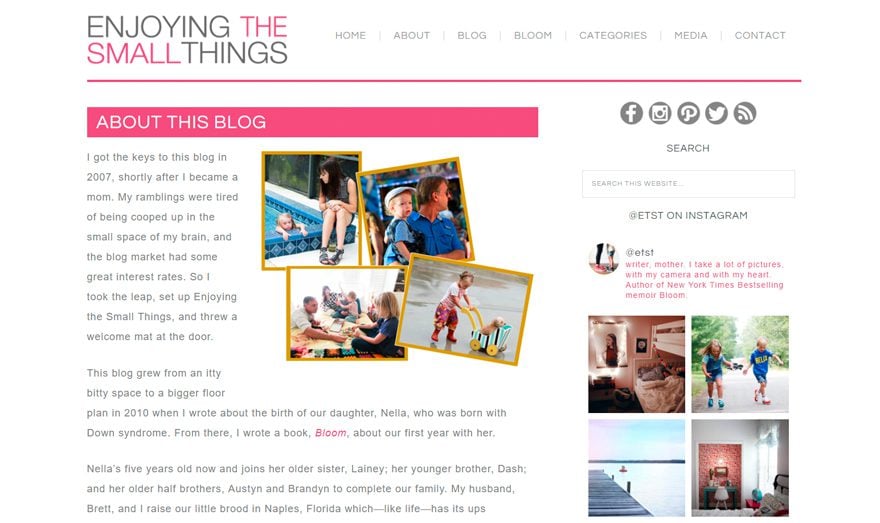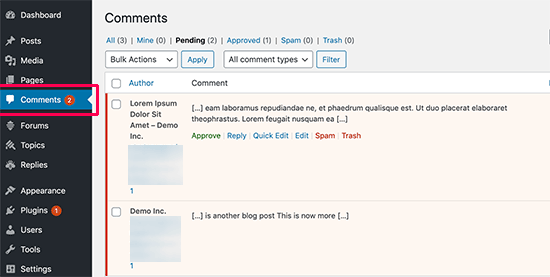Blogging, Twitter, and Personal Development: Using Digital Tools to Propel Your Professional Success
When first entering the professional space of any particular field, creating a successful professional track record and developing a professional network of connections are some of the most important steps for success that one can take. Though this can seem extremely intimidating and complicated at first without the right tools, failing to take these steps can potentially make or break the success of a career. Past decades of networking required frequent coffee dates with potential contacts, physically mailing information to large groups of people, and local face-to-face interaction (limiting the outreach that each individual had to grow their platform). Fortunately, the internet, more specifically the processes of blogging and the act of posting on social media sites such as Twitter, have both risen to the top as some of the easiest and most impactful ways that one can expand their professional network and gain personal contacts that will help move their career on the right path.
Blogging
In the article “Introduction to Blogging” from Wordpress, blogs are described as websites that provide a range of information about a particular topic or field of study through written posts (also commonly referred to as "entries"). Though they are often used for professional purposes such as spreading news and information about formal topics, blogs can also be more light-hearted and personal, containing information about the author’s (also referred to as a "blogger") personal life and or interests. In my personal experience, blogging can be a fun and stress-relieving activity when writing about personal interests. In my future career as a nurse (hopefully in a management position) I know that blogging about the topics that interest me within the nursing field and being able to share those ideas with those who are also interested will be both a fulfilling and enjoyable experience for me.
Though blog entries can range in the level of detail provided, many are often focused on a particular topic and will expand into great detail within a post. Many blogs also often reference other blog sites and sources of information to provide more detail on their topics of choice. For example, a blog post about improving nursing care in trauma hospitals in the midwestern United States may link to other articles within their own text that discuss research on improving nursing care in other parts of the nation in order to provide a deeper understanding. In order to link back to these original sources, bloggers will often use embedded links within the post to easily link their information. Pictures and videos are also often included throughout the page in an attempt to make the reading more appealing and seem less intense. These photos are also embedded directly within the post rather than linked for easy viewability.
From my perspective and experience with reading different blog posts, too many pictures might be distracting, but placing just the right amount of visual aids that actually pertain to and enhance the conversation is helpful in my comprehension of the topic at hand. While the amount of content that can be found on blogs can often be overwhelming at times, using everything available may also help to make more sense of the material. For example, I find that it can be extremely helpful to use the headings provided by the author to find the information most relevant to your reason for viewing the blog. The included multi-media under each of these headings can also be a helpful tool in not only finding the desired information but expanding what was once a narrow view of a topic and open the door for even more learning and network growth than expected.
Wordpress's "Introduction to Blogging" article also explains that blogs are created through and managed by using what is called a Content Management System (CMS). This system makes it easier for the blogger to act as an Administrator, or a person who controls tools to alter the look, use, and set-up of a blog site. Many of these tools include managing archives (the organization of past blog posts), the viewability of their newest blogs on the Feeds (software that allows “Feed Readers” to find the newest and most popular blog posts, and the syndication (or republishing) of their posts. As a blog user myself, understanding archives, feeds, and the syndication of certain information within blog posts is extremely helpful in determining the reliability of the source, relativity of information, and determining how much I am going to enjoy the material. Check out the video below to learn a little more about CMS and how the system can be used to create a blog.
Comments are also some of the most important features included within a blog page and often come in two types: trackbacks and pingbacks. Though the only major difference between the two commenting systems are what mode of communication they use (XML-RPC or HTTP Post), both allow other bloggers to comment on the content of the original blog post on their own websites and allowing the author of the original post to see a portion of what was said in response and have that linked to their site as well. Without the ability to comment on blog posts, users would be less likely to share their opinions on particular topics, causing a stifling of information and therefore blocking a great deal of possible business and personal connections.
Considering the use of blogging to build a Personal Learning Network, comment sections and the use of trackback and pingback systems are essential to making connections, expanding conversations, and learning more about successful members in your field and how you can rise to their various levels of success. In my future career as a nurse, I will almost certainly be using various blogging comment types and sections to not only share my own opinions on research and new data, but to gain contact information of someone I wish to learn from within my field and using that contact information to create new opportunities. Whether these opportunities include research or career positions or just chances for conversations between fellow members of the nursing community, having a strong core of professionals to contact in times of need will be extremely helpful in future conflicts.
Blogging is also recognized as one of the most powerful tools because of its versatility. So how can blogs be used to grow a personal network of connections? According to Lifehack.org, contributing your personal and acquired knowledge of a topic can be extremely helpful in growing your personal network connections. Not only will your field benefit from whatever scholarly research or idea is presented in the post, but your reputation is likely to increase in credibility and admiration when you prove your intelligence and valuability to their team. In order to do this, make sure to blog about things you are comfortable exerting authority on and are passionate about. This type of authenticity is key on many different networking and social media platforms, as humans often instinctually can tell who is genuine and who is faking it. For example, if I were to write a blog post about the history of Shakespeare's works, an audience is likely to sense my lack of knowledge and excitement about the topic and will draw less activity. On the other hand, if I were to blog about patient care in nursing, my naturally excited tone and wealth of knowledge compared to other topics would prove to other experts and casual readers that I am a reliable source.
Once those initial connections are made, use your blog posts to your advantage in keeping those connections alive. Promoting fellow field experts, staying in touch with the connections you have already made, and making sure your posts are viewed by a large audience than a few hardcore fans will ultimately grow your network even further. To do this, I will try promoting my future nursing-related blogs on other websites and types of internet platforms that other members of the nursing field use. This will help me reach those searching for content similar to what I have written and show any of my existing connections that I am still an active member of the community.
Twitter, widely known as just another social media app used by millions of internet users every day, is actually one of the most useful tools in expanding a Personal Learning Network and creating connections within a field. The ease of composing an up to 280 character message and being able to spread that information instantaneously and theoretically to a great deal of people is extremely powerful in the professional world. Instead of only being able to connect to those in your immediate area, Twitter's popularity and simplicity makes it easy to connect to others around the world and share ideas that otherwise would not normally be accessible.
Twitter also provides users the opportuntity to not only create their own lines of communication and begin their own conversations, but allows them to also actively engage in conversations started by others online and insert their own input. This, similarly to blogging, allows users again to not only expand their own knowledge of the topic, but to promote themselves as engaged members of the community. This is extremely important to growing a network, as it shows that the blogger would love to be considered for any business or connective opportunity that may arise.
But with hundreds of millions of tweets being posted every day concerning sports, entertainment, news, business, etc., some may often wonder what is the best way to reach an intended audience and get specific tweets trending? According to Search Engine Journal, there are a multitude of ways that you can have specific tweets be noticed by more people. Some of these ways include strategically choosing and constructing content that is going to be interesting, interactive, and entertaining for your followers. Whether this is through a means of planning out your content to only focus on a set group of topics in order to avoid clutter and foster natural and scholarly conversations, recognizing limiting the number of sales related posts (as these can become redundant and annoying for readers), or creating eye-catching and thought provoking original ideas along with sharing other relevant content that will help contribute to the chosen field and draw in more readers to the Twitter profile, understanding and planning to create content that is popular on the platform will help to ensure that more eyes are viewing the intended page than ever before.
Even small things, such as what is included in a Twitter bio, how one chooses to make the aesthetics of a profile look can make a huge difference, how one speaks online and even when tweets are posted can make or break the traffic coming onto a page. For example, if a Twitter profile is filled with clashing colors, a bio of too much information, and a lack of knowledge of internet slang and the culture of Twitter itself, many users may feel overwhelmed or uncomfortable and click off of the page faster. Similarly, if a majority of Twitter users are inactive from midnight to 5 a.m. and your tweets are scheduled to be posted at 3 a.m., a great deal of available users are unlikely to view those posts, limiting the growth of a strong personal learning network.
In addition to planning original content to be posted, Search Engine Journal also recommends that users should plan to interact with other established Twitter accounts within their field and even collaborate on content that can be shared on both accounts. This is also important because it not only fosters a greater conversation and connection between those curating the content, but it expands the range of where this content can be seen and who is able to continue the conversation. Power is in numbers and being able to create content that is both thought-provoking, interactive, and collaborative is likely to draw even more followers into a profile and make your content impactful within their everyday lives. Using an authentic voice can also help to retain traction on a site. In everyday life, people are much more likely to believe and trust a person who speaks and acts genuinely, so why would this be any different online? Being yourself and writing tweets that actually interest you will only help readers to feed off of your excitement and add to the conversation.
Overall, it is clear that Blogging and Twitter alike are some of the most important tools in creating a network of connections that matter within a particular field. From being able to promote yourself as a reliable and authentic source of information, connect to and maintain relationships with those within a field, and using the technology available to target your content to those who will benefit from it most, using the internet has proven itself to be an extremely effective and easy way to help develop a personal learning network. I hope that throughout my college and professional career, I am offered more opportunities to learn how to use the internet to my advantage and transform that knowledge into success.












Comments
Post a Comment